|
 Secure Site
Secure Site
|
 |
Archive for the 'Bamboo Chime Clocks' Category
 exhaustion cures - setting your Zen Alarm Clock Are you feeling stressed, fatigued, and burned out? Discover the top 10 ways to put a stopper in your personal energy drains
Consider this simple question: How are you?
We answer it 10 times a day, often rejoining with a clipped “Fine” or “Busy!” accompanied by a glazed smile. But when your best friend or spouse asks, perhaps you tell the deeper truth: You’re stressed out and tired. Really tired.
“Busy,” “stressed,” and “tired” are intimately connected. They describe the ethos of our times — and its inevitable aftermath. We balance work, family, friends, and our various self-improvement programs. We take in a steady stream of information from the people, screens, phones, and sounds that surround us. We don’t sleep enough. We multitask like crazy, striving to get more done in less time.
For a while, maybe even years, it’s easy to feel like you can handle this frantic pace — or even thrive at it. But ultimately, it works against you. “Stress is pervasive in our society, and it’s only getting worse,” says integrative-medicine expert Woodson Merrell, M.D., author of “The Source: Unleash Your Natural Energy, Power Up Your Health, and Feel 10 Years Younger.” “And people do not necessarily have the coping skills to deal with it, even when they think they do.” We often don’t realize how much of our days are spent dealing with stressful situations, and on a physiological level, the effects of stress add up. “You don’t start every day with a clean slate,” he says. “You start the day with all the stress you’ve accumulated in your life, and you add to that.”
No wonder we’re so tired. In fact, many experts contend that chronic stress and our inability to cope with it are the biggest factors in fatigue. “I hear it all the time. People tell me, ‘I have no energy, I can’t sleep, I’m exhausted,'” says Andrew Weil, M.D., director of the Arizona Center for Integrative Medicine at the University of Arizona and author of “Healthy Aging.”
This “tired-wired” state has become a cultural condition, he adds. And for those that struggle with it, fatigue can also become a significant crisis. “Your personal energy level should meet the demands of the day. Your sense of well-being should be good most of the time,” says Weil. “When it’s not, you have a real quality-of-life shortage.”
As is always the case, however, in crisis lies opportunity. Fatigue, it turns out, can be a terrific teacher, giving you a chance to slow down and examine your life, learn more about yourself, and consider what’s really important.
For starters, you want to cover your bases by eating a healthy diet, getting regular exercise, maintaining good sleep habits, and following other steps toward sound overall energy hygiene. But many of our most potent energy drains fly under the radar. By taking careful stock of your daily habits, work life, and relationships, you can begin to see patterns that cause your vitality to slip away unnoticed; make some simple changes, and you’ll plug these leaks and start feeling better. Choosing a gentle, chiming Alarm Clock to awaken you in the morning could be step 1.
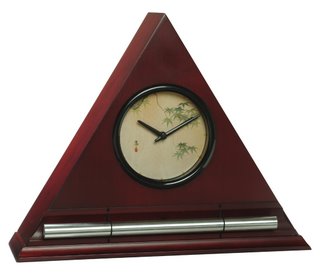 Japanese Leaves Dial Face in Burgundy Finish by Now & Zen Here, Merrell, Weil, and other experts highlight 10 surprising causes of fatigue and offer thought-provoking solutions to help you energize your mind, body, and spirit — and your life.
1. Exhaustion Cause: Good News
We know that our energy gets drained by negative events: death of a spouse, divorce, imprisonment, getting fired, serious illness or injury, losing your home or savings. But positive events can drain us, too, says Alice Domar, Ph.D., executive director of the Domar Center for Mind/Body Health in Waltham, Massachusetts. “Getting married, having a baby, buying a new house, getting promoted at work — these are all positive steps, but they often come with a lot of worry, which can be exhausting.”
To further complicate the picture, it’s hard to find support when things are going great. “Tell people you’re exhausted because you’re caring for your dying mother, and you’ll get all the support in the world,” Domar says. “Tell them you’re exhausted because you got a fantastic new job, and they’ll be like, ‘Give me a break!’ ”
Exhaustion Cure: Make a Positive Prep Plan
The best way to end-run positive exhaustion? Prepare for it. “When you start getting tired,” says Domar, “ask yourself two questions: ‘What’s being asked of me that I don’t feel that I can deliver?’ and ‘Am I accurately perceiving what’s needed?'” Then make a list of what really needs to be done, and when. “We often feel like everything needs to happen at once, and that’s not true,” says Domar. Breaking things down into manageable chunks lets you catch your breath so you can plan and delegate accordingly.
adapted from Body + Soul, September 2009
 Digital Zen Alarm Clocks, available in maple, walnut, bamboo, and black lacquer
Now & Zen
1638 Pearl Street
Boulder, CO 80302
(800) 779-6383
Posted in Bamboo Chime Clocks, Chime Alarm Clocks, Japanese Inspired Zen Clocks, Natural Awakening, Now & Zen Alarm Clocks, Sleep Habits
When you apply a few simple techniques, you can turn your daily walk into a rewarding practice.
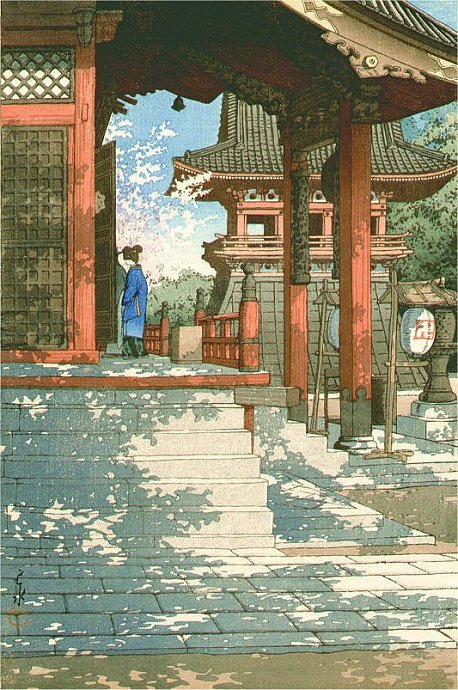 Hasui-b, Meguro Fudo What is mindful walking? It’s a technique that uses awareness of the mind/body connection to improve the quality of your walking experience on all levels. By approaching a walk in a mindful way, you make it a practice like yoga, meditation, or tai chi; every session brings new insights and challenges. As in yoga, you think about your body position, breathing, movements, and awareness, turning inward and outward at the same time. You’re working to get fit, and to improve your life as a whole. Treat walking as a practice, and it will become not only something you do with your legs but also a way to bring your mind, body, and spirit into balance.
Five Steps to Make Walking a Mindful Practice
- Identify your intention. The key to any mindful activity, intention provides focus and motivation, elevating your practice from routine to ritual. What is your intention? To walk for an hour every day? To develop a sense of centeredness and calm? To reduce stress? Your goals and intentions will evolve as you evolve. Let them, as long as they keep you in line with your higher sense of purpose — and keep you moving forward.
- Be consistent. A true practice requires ongoing attention. Of course, it’s natural to feel resistant at times, no matter what kind of activity you do. Your mind will create a thousand excuses not to walk today. Don’t let these passing thoughts distract you from your deeper intention. Get moving; start walking around your office or home, or wherever you are. You can quiet the mind by moving your body and get yourself back on track.
- Train your mind to focus. The mind loves — and craves — engagement. Without something to focus on, it will tend to wander, taking your practice with it. By learning to focus, you will be able to walk more efficiently.
- Listen to your body. As with any relationship, the connection between mind and body depends on how well one listens to the other. Our tendency is to try to rule the body with the brain; however, they are more like equal partners, offering feedback and direction as you go. Listen to what your body is trying to tell you by noticing any sensations that come up while you’re walking. You may feel energized as your leg muscles engage or relaxed as your breathing deepens. If you detect any complaint from your body, such as pain or discomfort, identify the source. Then make small adjustments in your technique and see whether the sensation lessens.
- Embrace the process. Goals provide a greater context for your practice. But building patient awareness of the process is even more important. Sometimes walking will feel easy and rewarding; other times, more like a chore. As part of a mindful practice, you accept the challenge as part of the process and continue to stick with it. My tai chi master sees difficulty as an opportunity — a lesson to be learned. Accepting all of these parts of the process lies at the heart of making walking a mindful exercise.
adapted from Body + Soul April/May 2006
 Digital Zen Alarm Clocks, meditation timers and alarm clocks with chimes
Now & Zen
1638 Pearl Street
Boulder, CO 80302
(800) 779-6383
Posted in Bamboo Chime Clocks, Goodness, Meditation Timers, Meditation Tools, mindfulness practice, Now & Zen Alarm Clocks, Well-being
 ink painting Fast knowledge is about solving problems, slow knowledge is about preventing them.
Knowledge is being applied faster and on a larger scale than ever before – with consequences that are sometimes disastrous. Farmers can use the latest chemical pesticides to protect their crops, but the pests soon develop resistance to these new substances. This is an example of the failings of “fast knowledge”, according to environmental philosopher David Orr. Truly valuable knowledge is developed through a lengthy process of trial and error, he believes, and not by racing ahead with some new but untested innovation.
As a rule, fast knowledge – standardized, measurable solutions – is seen as the pinnacle of human progress. But many of society’s current problems can be traced to the fact that we apply knowledge before we took the time to consider the consequences. The speed at which we are confronted with new technologies – in communication, agriculture, health, energy, etc. – and with growing mountains of information in all fields, far exceeds the human ability to absorb and learn from it.
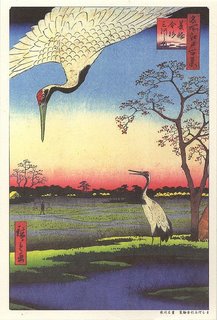 Utagawa Hiroshige (1797-1858) Cranes in a Landscape Ukiyo-e Orr, who teaches environmental studies at Oberlin College in Ohio, has begun championing what he calls slow knowledge, whose main themes are thoroughness, patience and harmony. In The Nature of Design: Ecology, Culture, and Human Intention (Oxford Press, 2002) Orr describes slow knowledge as resilient, elegant and, most of all, practical. Fast knowledge, meanwhile, is usually hierarchical, abstract, and based upon a sense of competition. Laboratories, universities and boardrooms are the places where fast knowledge is usually created out of reams of new data. Slow knowledge often arises from the wisdom of local communities.
adapted from Ode Magazine, July 2004 by Marco Visscher
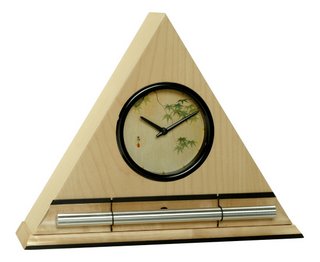 Zen Alarm Clock in Maple Finish, Japanese Leaves Dial Face, harmony in design
Now & Zen
1638 Pearl Street
Boulder, CO 80302
Posted in Bamboo Chime Clocks, Chime Alarm Clocks, intention, Japanese Inspired Zen Clocks
 plum blossoms with moon The power of intention can be used to heal and promote good health, improve performance in many areas and even affect the future.
To be most effective, an intention should be a highly specific aim or goal, which you should visualize in your mind’s eye as having already occurred, while you are in a state of concentrated focus and hyper-awareness. When you imagine this future event, hold a mental picture of it as if it were occurring to you at that moment. Engage all five senses to visualize it in detail.
The centerpiece of this mental picture should be the moment you achieve the goal.
We might also improve the quality of our daily lives just by carrying out detailed mental rehearsals. At home, we might be able to send intentions to our children to perform better at school or to allow us to be more loving to friends and family. Human intention might be powerful enough to affect every element of our lives.
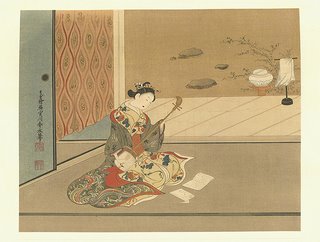 Shunsui Katsu-Miyagawa All of these possibilities suggest that we have an awesome level of responsibility when generating our thoughts. Each of us is a potential Frankenstein, with extraordinary power to affect the living world around us. How many of us, after all, are sending out mostly positive thoughts?
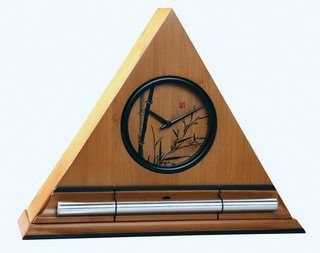 Bamboo Zen Clocks, progressive chime clock and timer
Adapted from Ode Magazine, Jan/Feb 2007 by Lynne McTaggart (The Intention Experiment: Using Your Thoughts to Change Your Life and the World, Free Press 2007)
Now & Zen
1638 Pearl Street
Boulder, CO 80302
Posted in Bamboo Chime Clocks, Chime Alarm Clocks, Goodness, intention, Japanese Inspired Zen Clocks, Meditation Timers, Meditation Tools, mindfulness practice, Natural Awakening, Now & Zen Alarm Clocks
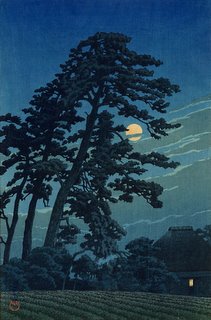 moonviewing, sweet slumber We spend up to a third of our lives asleep. Although some hard-driving people may view sleep as an inconvenience that curtails productivity and leisure activities, slumber is certainly no waste of time. In fact, sleep may play a more crucial role than diet or exercise in fostering optimal health.
A natural restorative, sleep offers an antidote to the damage done to our bodies during the day. It allows the body to replenish its immune system, eliminate free radicals, and ward off heart disease and mood imbalances. When sleep is disrupted—whether by lifestyle factors, insomnia, sleep apnea, narcolepsy, restless legs syndrome, jet lag, sleepwalking, night terrors, imbalance of hormones, or some other disorder—emotional and physiological health suffers. But you don’t have to accept sleep deprivation and the ills that accompany it. One way to gently snooze your way back to health is to focus on balancing your hormones.
Balance your hormones
The word hormone comes from the Greek hormon, meaning “to stir up.” Hormones are released by the various endocrine glands in the body in order to regulate energy production, growth, sexual development, stress responses, and many other functions. Because minute quantities of hormones can “stir up” so many activities in the body, when they are thrown out of balance the results can affect the entire body. Imbalances of Hormones often manifest as insomnia and other sleep problems. Key factors that can upset hormone levels include thyroid dysfunctions, perimenopause and menopause (in fact, disturbed sleep is one of the complaints that cause women to seek treatment for menopause and perimenopause), and andropause (the male form of menopause). Although hormone levels generally decline as a result of aging, they can also be affected by dietary choices, mineral deficiencies, environmental toxins and synthetic chemicals, medications, smoking, and stress.
Rather than artificially manipulating your estrogen levels with synthetic hormones and ignoring the reasons behind any imbalances of hormones, it is more valuable to determine why you have imbalances of hormones in the first place. Depending on the reason, restoring hormonal balance may be more effectively achieved with dietary changes, nutritional supplements, natural progesterone cream, herbal therapy, or traditional Chinese medicine tailored to the specific factors causing the imbalance of hormones.
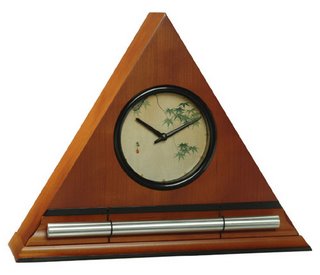 Zen Clock with Chime for a progressive awakening to sweet a slumber Now & Zen
1638 Pearl Street
Boulder, CO 80302
Excerpted from Alternative Medicine magazine’s Definitive Guide to Sleep Disorders: 7 Smart Ways to Help You Get a Good Night’s Rest (Celestial Arts, 2007)
Posted in Bamboo Chime Clocks, Chime Alarm Clocks, Japanese Inspired Zen Clocks, mindfulness practice, Natural Awakening, Now & Zen Alarm Clocks, Sleep Habits
 A shakuhachi flute, traditionally made of bamboo The shakuhachi, is a Japanese end-blown flute. It is traditionally made of bamboo, but versions now exist hardwoods. It was used by the monks of the Fuke of Zen Buddhism in the practice of suizen, blowing meditation).
Suizen is a Zen practice consisting of playing the shakuhachi bamboo flute as a means of attaining self-realization. The monks from the Fuke sect of Zen who practiced suizen were called komusō (“emptiness monks”).
adapted from wikipedia.org
 B Tone Digital Zen Alarm Clock in a Bamboo Finish
Now & Zen
1638 Pearl Street
Boulder, CO 80302
Posted in Bamboo Chime Clocks, Chime Alarm Clocks, Japanese Inspired Zen Clocks, Now & Zen Alarm Clocks, Progressive Awakening, zen monks, Zen Timers
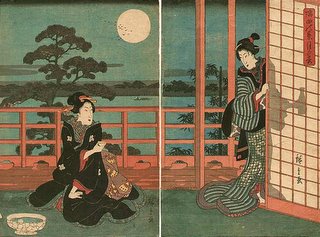 Full Moon Sumida River, Hiroshige Ukiyo-e while I walk on
the moon keeps pace beside me
friend in the water
-Masahide-
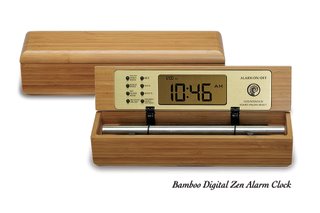 Bamboo Digital Chime Clock, a meditation timer and alarm clock
Now & Zen
1638 Pearl Street
Boulder, CO 80302
Posted in Bamboo Chime Clocks, Japanese Inspired Zen Clocks, Japanese Poetry, Meditation Timers, Meditation Tools, mindfulness practice, Natural Awakening, Now & Zen Alarm Clocks, Progressive Awakening, Ukiyo-e, Yoga Timer, Yoga Timers by Now & Zen
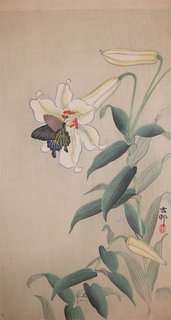 Butterfly on Large Light Yellow Lilly, Kosan 1912
The falling flower
I saw drift back to the branch
was a butterfly.
–Arakida Moritake (1473-1549)
 Bamboo Digital Chime Clock, a meditation timer and alarm clock
Now & Zen
1638 Pearl Street
Boulder, CO 80302
Posted in Bamboo Chime Clocks, Chime Alarm Clocks, Japanese Inspired Zen Clocks, Japanese Poetry, Meditation Timers, Meditation Tools, mindfulness practice, Natural Awakening, Now & Zen Alarm Clocks, Progressive Awakening, Zen Timers
 moonviewing Quite the contrary
to what I’d thought, passing clouds
are sometimes simply
the moon’s entertainment,
its lovely decoration.
-saigyo-
 Zen Alarm Clock in Maple Finish, Japanese Leaves Dial Face
Now & Zen
1638 Pearl Street
Boulder, CO 80302
Posted in Bamboo Chime Clocks, Japanese Inspired Zen Clocks, Japanese Poetry, Meditation Timers, Meditation Tools, Now & Zen Alarm Clocks, Progressive Awakening
 lotus How mysterious!
The lotus remains unstained by its muddy roots,
delivering shimmering
bright jewels from common dew.
-Henjo (816- 890) was a Japanese waka poet and Buddhist priest.
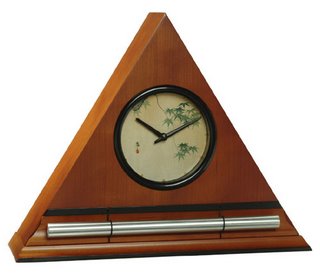 Zen Chime Clock with Japanese Maple Leaves in Honey Finish
Now & Zen
1638 Pearl Street
Boulder, CO 80302
Posted in Bamboo Chime Clocks, Chime Alarm Clocks, Japanese Inspired Zen Clocks, Japanese Poetry, Meditation Timers, Meditation Tools, mindfulness practice, Now & Zen Alarm Clocks, Progressive Awakening, Yoga Timer
« Previous Page — « Previous Entries
Next Entries » — Next Page »
|
|
|
|